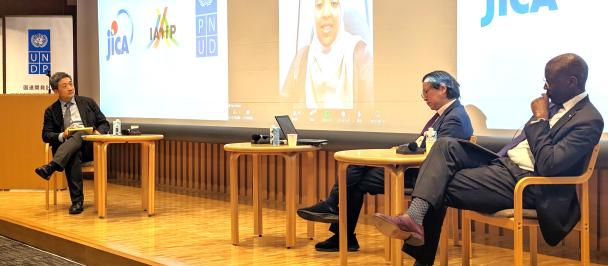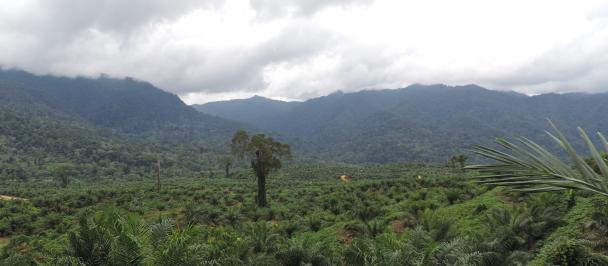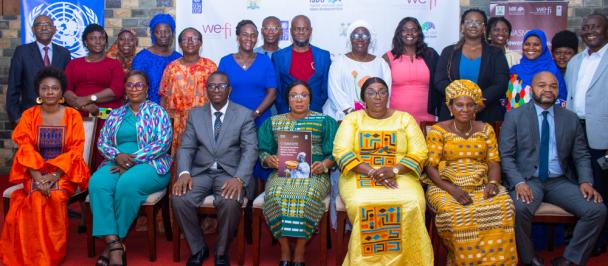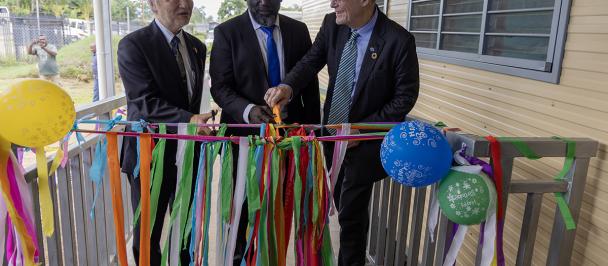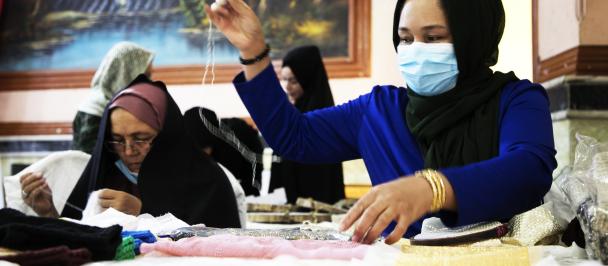The World of Indigo and The Sustainable Development of Pornpimon ‘Mew’ Mingmitmee
November 28, 2023
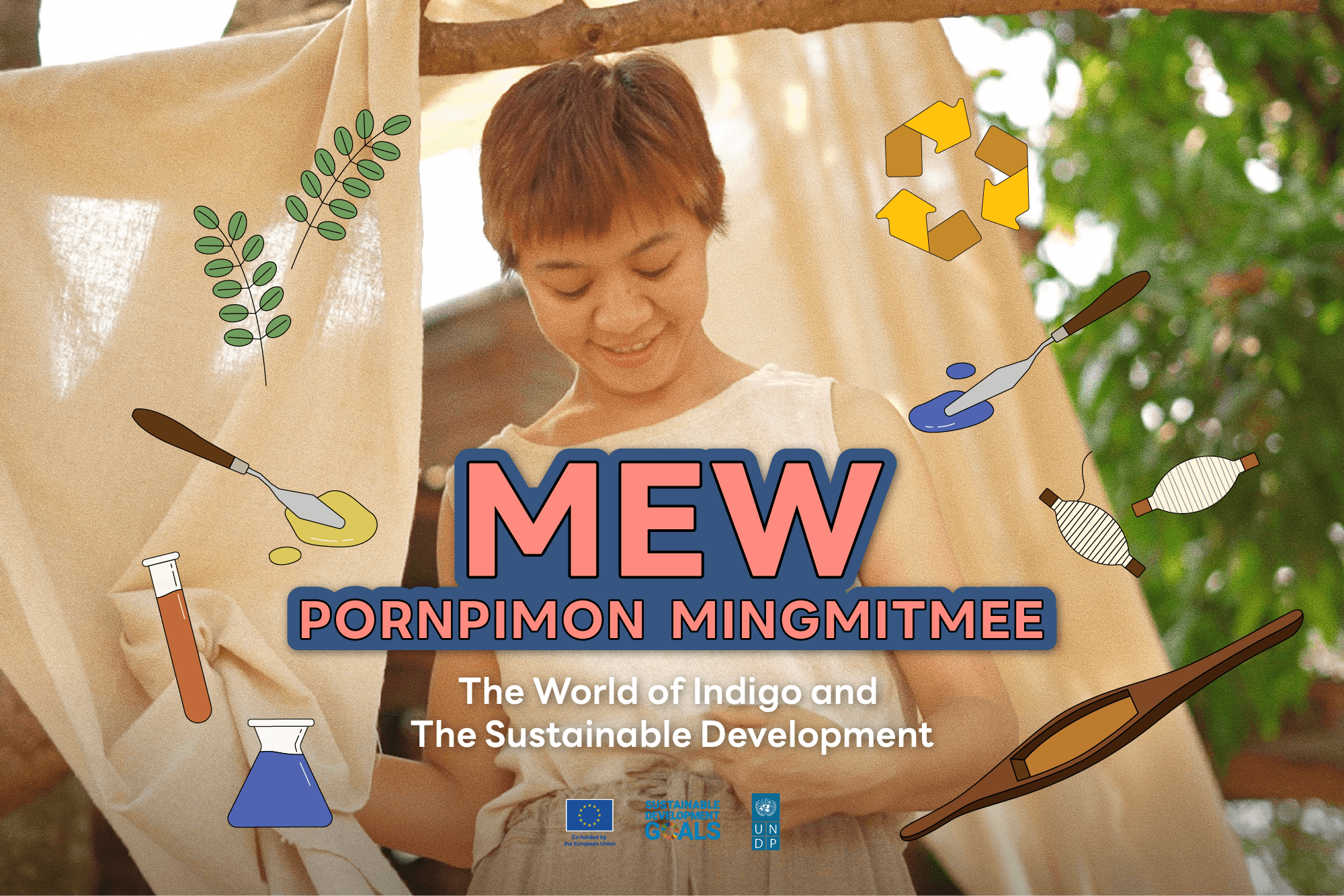
Born in Ban Nong San, Phu Phan District, Sakon Nakhon, the distinguished source of indigo tie-dye clothing, Pornpimon 'Mew' Mingmitmee was born and raised in the world of indigo.
Growing up in a village abundant with indigo trees, its production, and tie-dyeing, Mew was immersed in the utilization of natural colors and the scientific methodology involved. To create each vibrant, natural indigo fabric of Sakon Nakhon, a harmonious blend of nature, artistic skill, and chemical knowledge to extract indigo hues is required.
Hence, Mew chose to enroll in the Faculty of Science at Silpakorn University. Contrary to common assumptions of science, it specializes in the study of art conservation. This field demands the integration of knowledge from science, and art and the utilization of natural colors derived from plants, minerals, soils, and rocks. Moreover, it requires an understanding of history for the purpose of preserving and restoring temples and archaeological sites.
Driven by her fascination with natural colors and the folk wisdom of her hometown, renowned for its indigo production, Mew sought to deepen her understanding by pursuing studies abroad in India.
“In India, I underwent training with the artisans, learning the entire process from mixing colors to preparing them for imprinting on clothes. This technique is commonly referred to as Block Print," Mew elaborated.
Upon completing her studies, Mew came back to her hometown in Ban Nong San, Pu Phan District, Sakon Nakhon, to work with the community. Yet, her aspirations were not centered around an idealized vision of community development; rather, she aimed to prove her worth.
"I wasn’t thinking about saving others. The thought of exchanging a six-figure salary for the development of my community never crossed my mind. When I first returned home, my priority was achieving self-sustainability. If I couldn't do that for myself, I wouldn't have the courage to persuade others to come back and work in our hometown. I cannot live like that," Mew explained.
"For my initial return home, I wanted to demonstrate that I could live in a rural area while having a larger income than when I was in Bangkok. Once I achieve self-sustainability, I'll be in a position to enhance the income of others," expressed Mew.
"It's impossible for people to pursue solutions for sustainable development, including waste management, without a full belly. It just won't happen," emphasized Mew.
This time around, she came back with a keen interest in exploring the potential and untapped spaces within her communities that could be further developed.
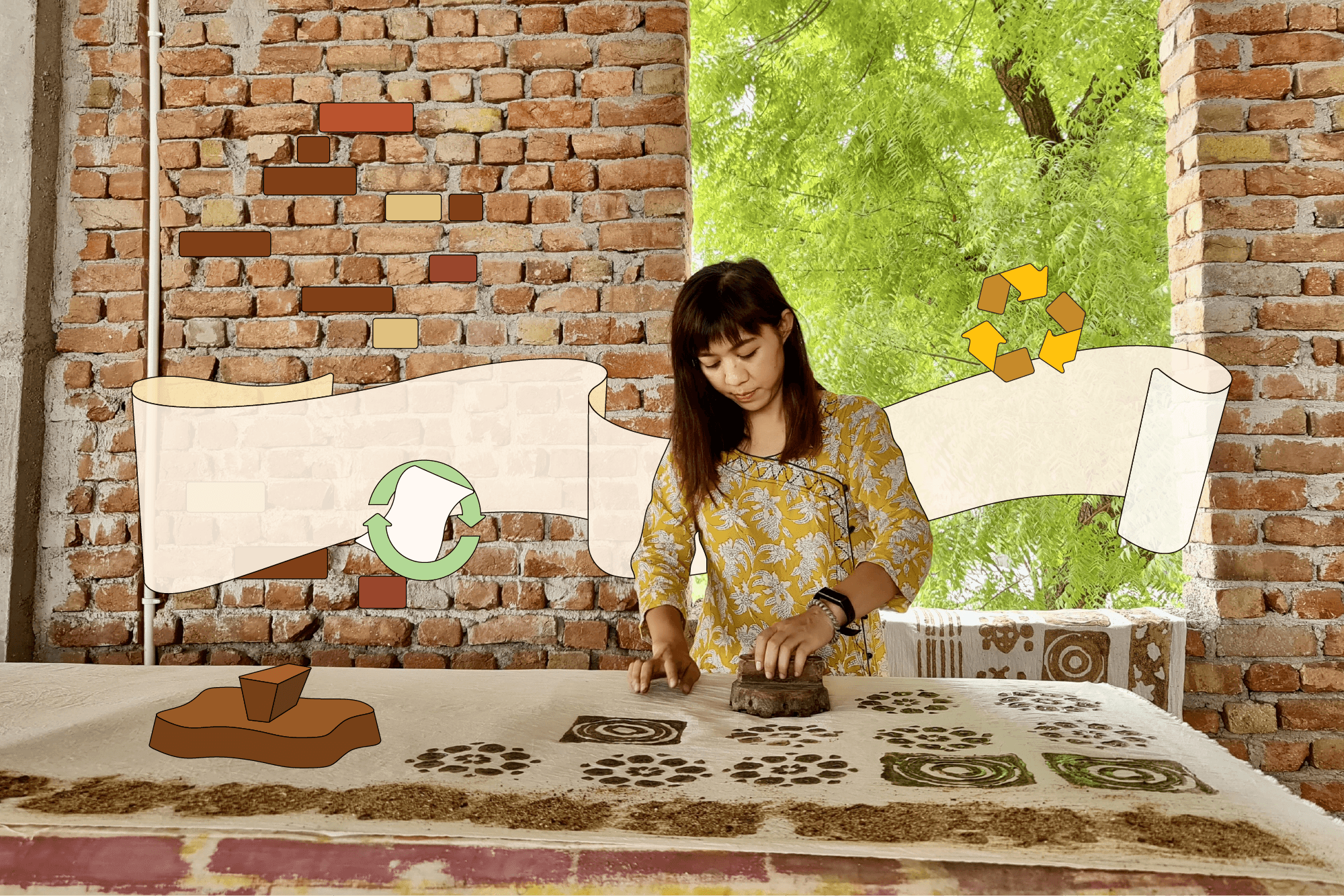
"At first, I researched available work opportunities in my hometown. After spending some time there, I discovered a significant growth in the clothing industry within the village, with high demand and supply. However, I also observed a substantial amount of fiber waste being generated," explained Mew.
Mew observed that a substantial amount of indigo fiber waste and scrap threads were being generated from the production of indigo clothing. This sparked her idea to address and manage this mountain of fiber waste.
“While studying in India, I stayed near a village known for papermaking. I observed their use of recycled cotton fiber from textile factories. It sparked an idea in my mind: What if we utilized fiber waste to create drawing paper of comparable quality to that of India? Indian paper, renowned for its cotton fiber texture, is considered the best artist watercolor pad in the world. We could use our fiber waste to produce similar paper and generate additional value," shared Mew.
This marked the beginning of her journey back to India to study paper production.
Her experience in India revealed that the equipment in the village was not well-equipped for spinning fibers to produce paper yet. She had to engage in discussions with individuals from various sectors to spearhead the development of paper production.
"I inquired with university professors about the method for softening cotton. This curiosity arose from the fact that Indian fabric, being thinner and factory-sewn, had smaller fibers. In contrast, the village's fabric was handcrafted every step of the way from stretching, thread pulling, and sewing, resulting in a thicker texture with uneven surfaces, unlike those in India. The professors recommended utilizing microorganisms in sewage to break down hair and cotton. This marked the beginning of the natural paper production process."
Mew also had an opportunity to talk with a textile factory owner, exploring the possibility of recycling old fabric into new fibers. Upon confirmation, the factory added that the recycling was not only viable but also demanded considerably less fuel and water than the production of new fibers.
In a stroke of good fortune, the factory owner already had an interest in recycling old fabric. Consequently, they collaborated on the fiber recycling program, leading to the introduction of paper products crafted from fiber waste sourced from the village.
The recycling of the substantial fiber waste in the village aligns with SDG Goal 12 which supports sustainable consumption and production patterns, particularly focusing on production that helps reduce waste and recycling.
Specifically, It also adheres to Goal 12.8, stating that sustainable development encourages reducing waste through repeated use and recycling as much as possible.
Mew provided further clarification, "On average, there were approximately 100 kilograms of fabric scraps discarded each month. This was a loss of potential added value and harm to the environment. By converting these scraps into paper, we could unlock added value and simultaneously mitigate the adverse environmental impact."
"Transforming the scraps into paper generates value. Twenty sheets of A4 drawing paper are priced at approximately 600-700 baht. This is the added value from the fabric scraps," Mew explained in her calculation.
"During an experiment, spinning 30 kilograms of fabric scraps into fibers resulted in minimal waste (scrap or leftovers from yarn spinning). Instead, we obtained around 30 kilograms of usable fabric, capable of weaving up to 39 meters. 2 meters of this woven fabric can be tailored into a shirt, yielding approximately 15 shirts in total. We just saved 15 shirts from ending up as waste."
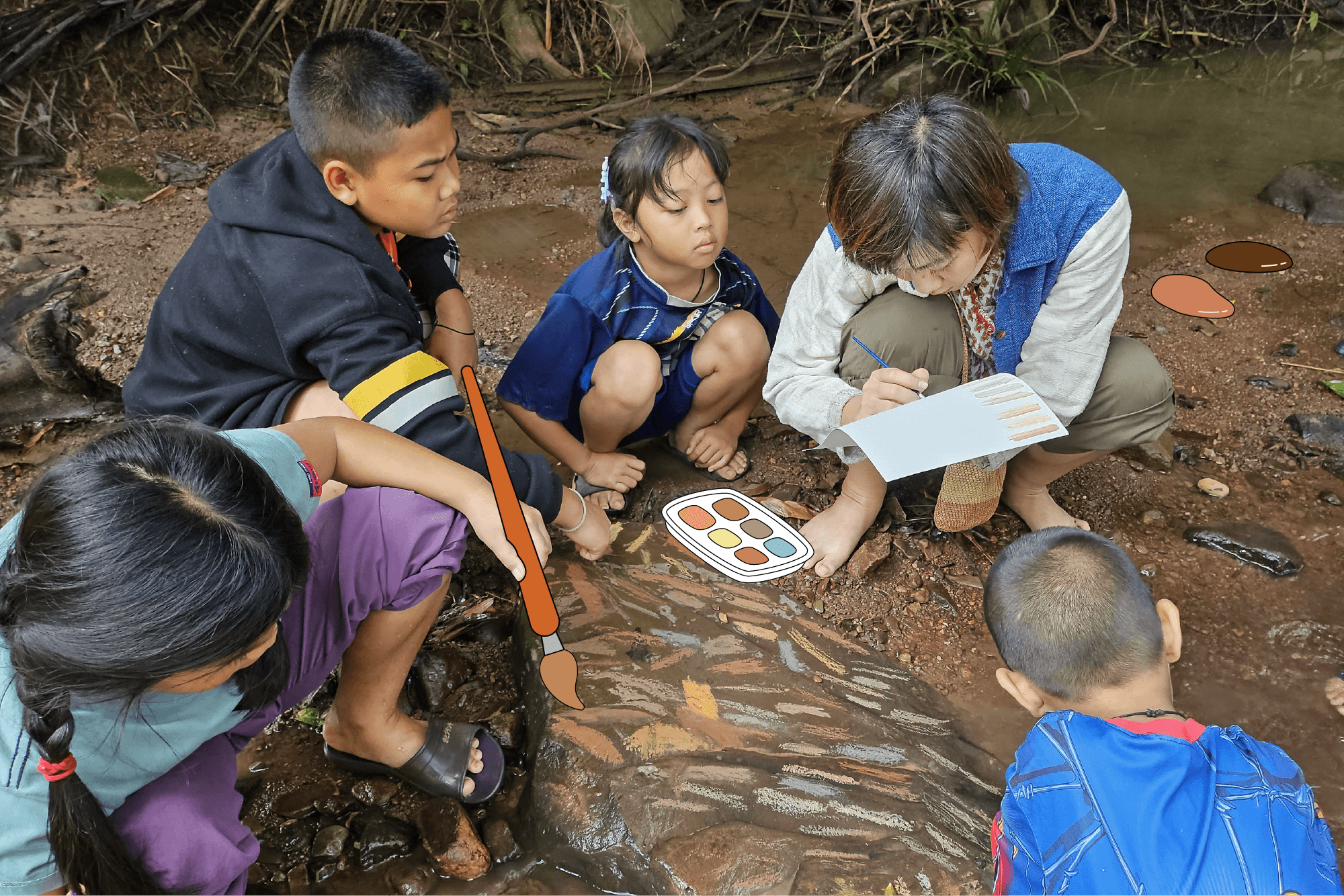
In addition to fabric scraps, Mew also loves the way of life in her community. She envisions transforming her community into a learning hub for those interested in both the local lifestyle and the production of indigo tie-dye cloth. Pursuing this vision, Mew set to develop Ban Nong San's community-based tourism model.
"We harnessed the potential of our villages to pave the way for tourism, emphasizing an interactive experience between tourists and villagers. The activities encompass weaving, dyeing, forest walking, and foraging for cooking," Mew explained, detailing the community-based tourism model of Ban Nong San.
"I shared these tourism design concepts with outsiders through social media. Previously, the village primarily featured individual entrepreneurs, like homestays and camping. However, my vision involves fostering a dynamic collaboration within the community, promoting an exchange of knowledge between locals and visitors.”
Community-based tourism also showcases the skills of women, particularly aunties and mothers aged 40 to 50, in the community through the agricultural way of life within the Ban Nong San community and valuable folk wisdom on the crafting of indigo tie-dye cloth and its processes.
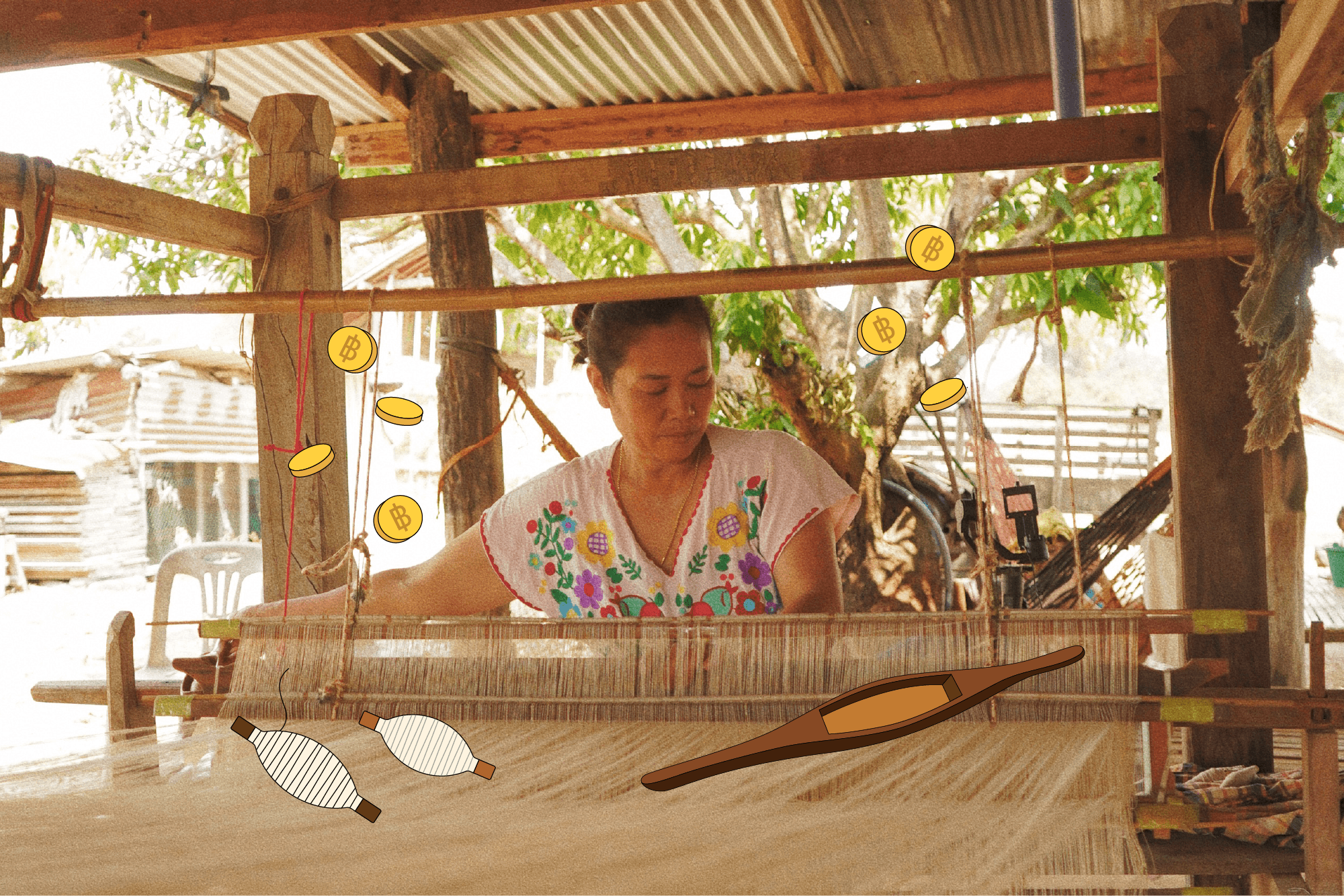
Within the community, women play a pivotal role in driving community-based tourism activities, while men dedicate their time to labor-intensive work outside.
This community-based tourism also follows SDG 5 which seeks to achieve gender equality and SDG 8 which seeks to foster sustained, inclusive, and sustainable economic growth, full and productive employment, and decent work for all.
Community-based tourism not only instills pride in the women of the community and imparts knowledge to visitors but also generates additional income for the local community. The majority of the community consists of agricultural farmers whose annual income relies on the annual crop yield of 20,000 to 30,000 per year. Tourism provides an opportunity for them to generate extra income throughout the year.
"Typically, as a result of the lack of flexible income, villagers rely on a single lump sum payment from their annual crop harvest to cover the costs of raising their children, household expenses, and fertilizer debt. Community-based tourism enables them to earn weekly and monthly income. The greater flexibility in income allows for more stable financial management and reduces the burden of debt they have to carry."
The supplementary income from community-based tourism also aligns with SDG 1, which advocates for the eradication of poverty in all its forms as well.
—
While her return to work with the community has been a great success, the path leading up to this moment has been far from easy and has encountered its fair share of obstacles.
"There were undoubtedly numerous obstacles. They are amusing anecdotes to reminisce about now, but at the time, it was quite exhausting," Mew affirmed. "For instance, there were issues related to the generation gap, where each generation held different beliefs, experiences, and priorities."
Nevertheless, her return to work in the community is not egocentric, nor does it solely emphasize her goodwill without considering the opinions of other villagers.
If I had to advise those aspiring to return home and contribute to their communities, I would emphasize that "working with the community is not living your dream, but rather an exhaustive endeavor. Not only are we carrying our own dreams, but we are also entrusting our dreams to others whose visions may differ from ours."
"Our mission, therefore, is to find a way to collectively carry this dream without being egocentric or biased against local beliefs. If the villagers disagree with our opinions, such as our fabric pattern design, the fault does not lie with them. Imposing our ideas on the villagers is a violation that lacks empathy."
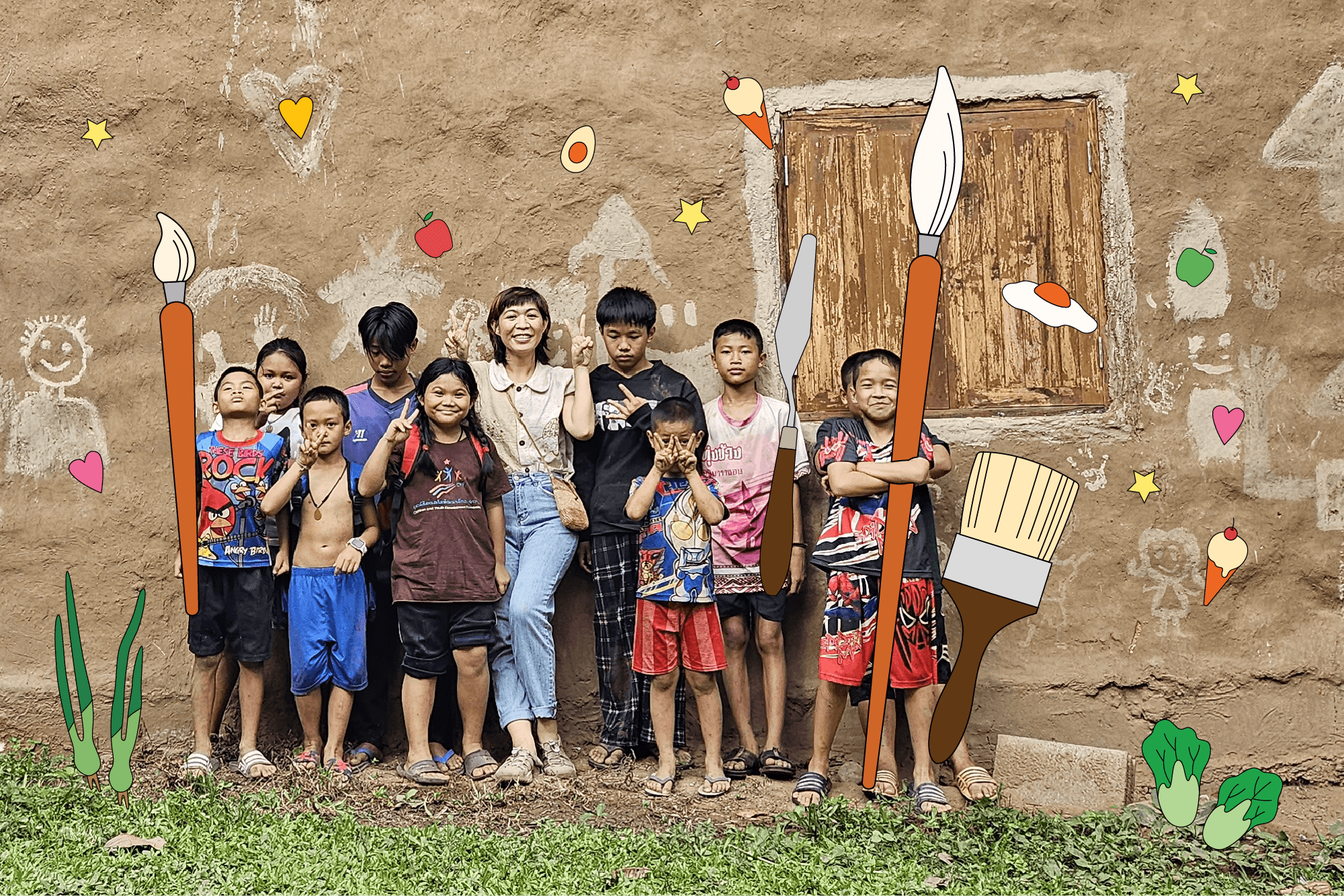
"To collaborate with the community, it is essential to understand ourselves," Mew continued. "For instance, if we carry something in our backpack that we wish to implement, we must take a look at what is in the backpacks of those in our communities. These ideas should interconnect with each other, rather than imposing our one-sided ideas on them."
"My approach to working with the community is to first demonstrate our capabilities. Subsequently, irrespective of the source of ideas, everyone is encouraged to share their thoughts. After successfully realizing our passions and utilizing the opportunities stemming from our efforts, we can extend those opportunities to the aunties and mothers in the community, fostering income together."
For Mew, a sustainable business is a business that is inclusive of the people in the surrounding community. In her work with the community, the crucial element is the collaboration with diverse individuals from various sectors. This aligns with SDG 17 which seeks to strengthen the means of implementation and revitalize the global partnership for sustainable development.
This ultimate goal is the most important, as other goals become unattainable without it.
When asked to describe her ideal world, her answer captured the essence of who she is.
"Individuals should not perceive their development ideas alone. Instead of assuming the role of an all-knowing deity with ultimate judgment, one should remain open to alternative ideas, particularly those from the local community."
"My ideal world is just a simple world where everyone can rest peacefully with fulfilled needs. With this simplicity, other forms of beauty naturally follow."

 Locations
Locations